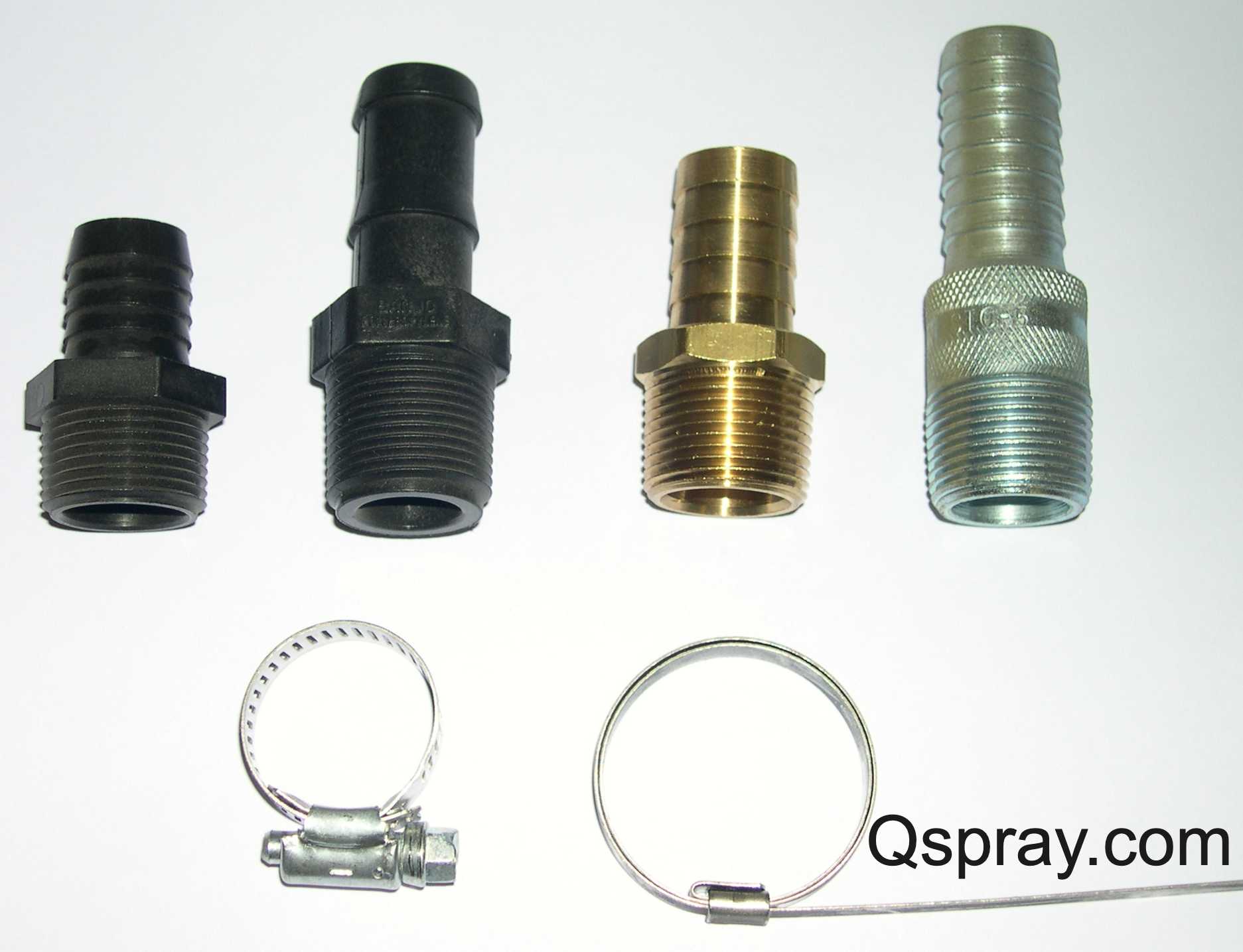Your Pest Control Power Sprayer - Even the Little Things Matter
Posted by Andrew Greess on Sep 9, 2020
Power Sprayer - It All Matters
When it comes to your Pest Control or Landscape Spray Rig, most people pay attention to the big parts: engine, pump, hose reel.
However, the little stuff also matters. Pay attention to small things like plumbing fittings. They aren’t a major part of the power sprayer, but the wrong fitting in the wrong place can cause major problems.
There are huge variations in quality of clamps and fittings.
This photo shows some of the different types of hose barbs that are available.
For example, fittings can be steel, brass, black pipe, PVC, nylon, etc. Fittings are almost never specified when buying a new rig.
The wrong fitting in a critical position on your pest control sprayer can be disastrous.
A fitting that is too short, thin, or weak can crack under pressure, vibration or torque, resulting in an expensive spill. This risk is magnified in areas of hot or cold temperature extremes or where the sprayer will constantly be driven over bumpy roads.
Be sure to select fittings that can stand up to the product being applied. For example, many fertilizers will destroy black pipe fittings in no time. Here is a photo of a steel fitting from a weed control sprayer. The preemergent basically ate away the steel. Whomever built this sprayer should have used heavy duty poly or brass fittings.
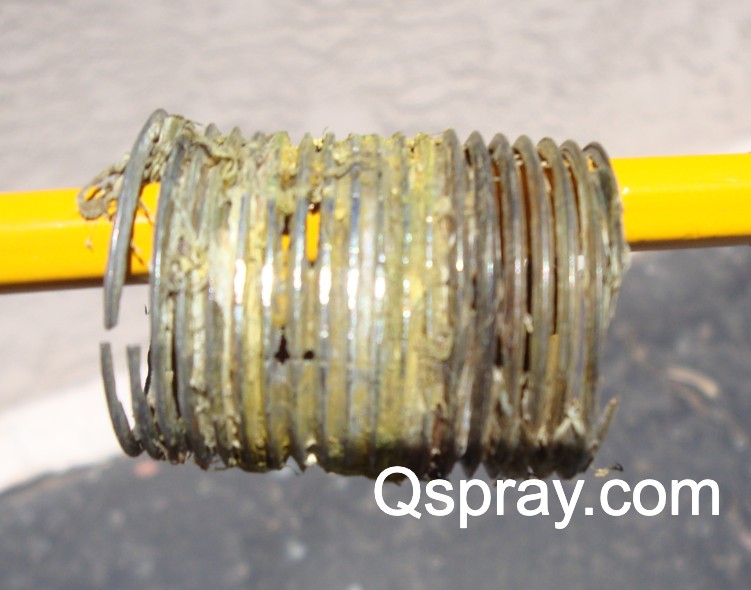
Some things to look for when buying a power sprayer
Higher pressure systems require sturdier, heavier-duty fittings. On high pressure systems we use longer hose barbs so we can put multiple clamps on to secure the hose.
Fittings attached to valves that are turned or hoses that are pulled need to be heavier-duty to handle the torque (stress). It may make sense to secure the valve or hose to the vehicle or skid so that the valve takes the stress instead of the fitting.
Fittings for larger diameter hoses, such as on tree sprayers or termite pretreat rigs, should be sturdier and longer to handle the weight of the hose.
Fittings in key or high-risk positions should be heavier-duty to reduce risk. For example, the pickup fitting coming out of the bottom of a tank is critical. If it breaks, the tank will empty.
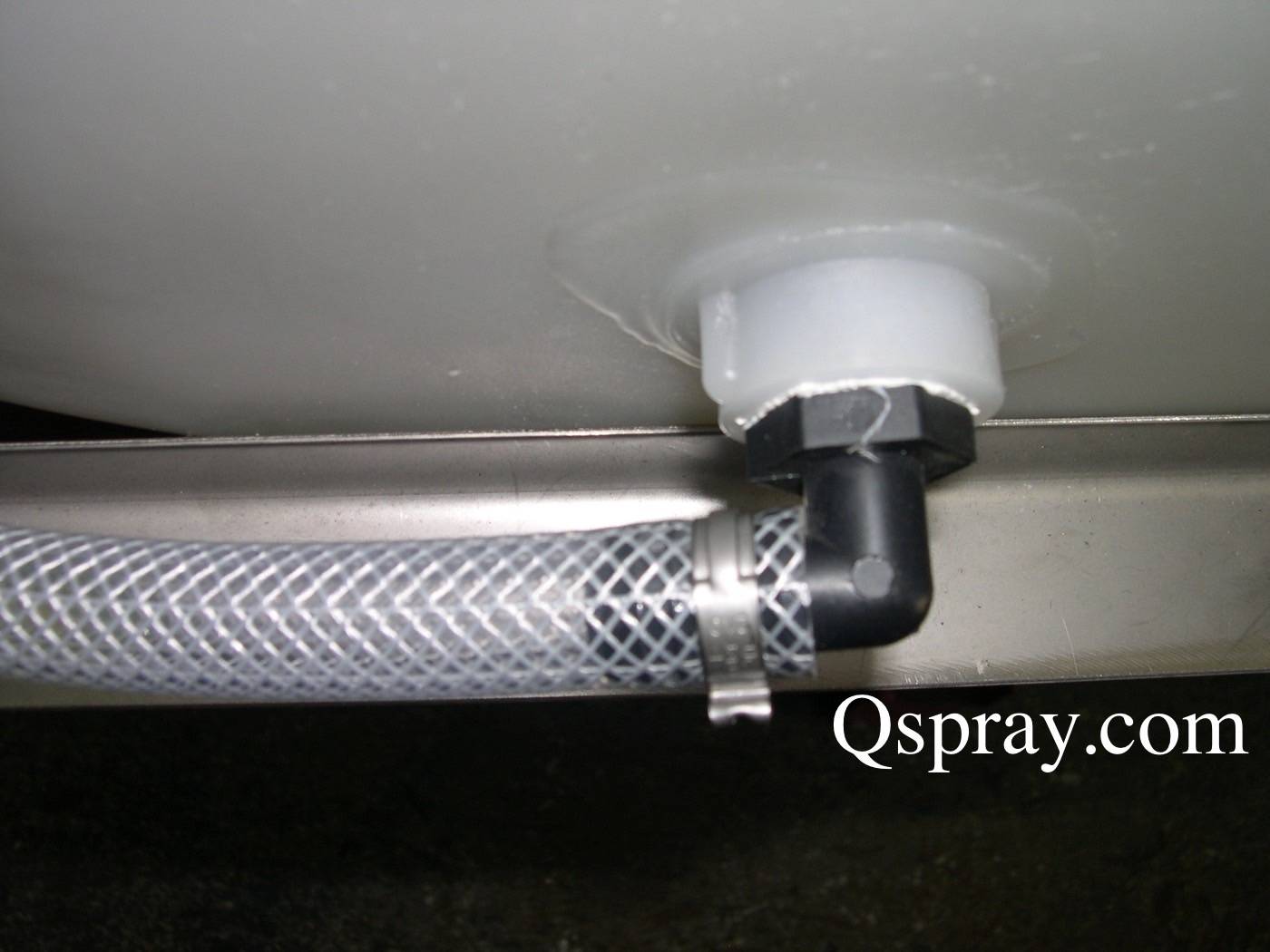
Power Sprayer Problems Caused by Cheap Fittings:
Here's what happens when you have a cheap fitting and an unsecured backpack - a broken tank and a 50-gallon chemical spill:
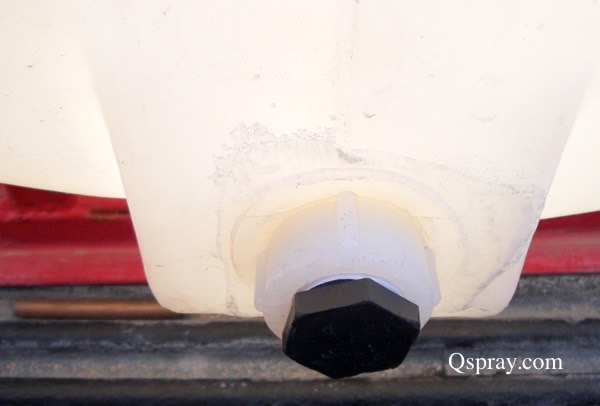
Here is another real-life example of this situation.
I was doing some training for a Country Parks & Rec Department that has almost 100 spray techs.
I showed a picture of a cheap plastic fitting used for the suction line at the bottom of weed spray trailer. I said this was risky because if the fitting cracked, hundreds of gallons of chemical would spill and there would be no way to stop it.
One of the technicians raised his hand and said that exact thing happened to him the first time he used a new 300 gallon weed control sprayer. He was driving the sprayer off the yard for the first time and hit a bump. He spilled 300 gallons of herbicide mix. Fortunately, he was still in his equipment yard when the spill occurred so other than spending most of the day cleaning up the mess, the impact was minimal. This would have been disastrous if it occurred on a city street.
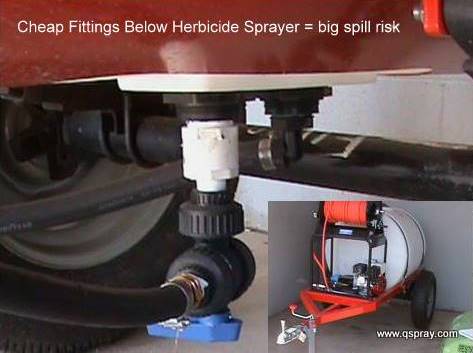
When purchasing a sprayer, be sure to understand what type of fittings you are getting. Don’t accept cheap fittings. If you already own a sprayer, inspect fittings for weak points and replace cheap, worn or aged fittings BEFORE you have a problem. A cracked fitting can cause a chemical spill that may get you and your company on the evening news. Don't let this happen to you.
If you have any experiences with busted fittings, please share them with me.


